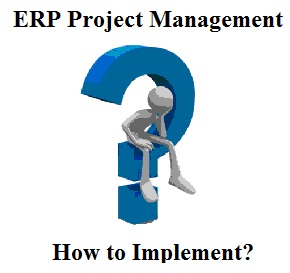2.1 Planning communications
Project communications planning is an activity that allows defining specific behaviors and selecting techniques to gather, manage, delegate and review stakeholder information. Planning communications can be a subsidiary process of determining project stakeholder information and using communications channels to exchange that information between all stakeholders and the project management team. The process focuses on the idea that communication and human interaction can make or break a project, so it is highly important to develop and maintain effective communication, which means that information is provided in the right format and at the right time. Often the process of planning project communications is undertaken early at the project development stage and regularly reviewed throughout the project course in order to ensure continued applicability of the chosen communications channels.
The project manager takes responsibility of developing a communications plan and selecting communications approaches to run the process and establish smooth information exchanging and human interactions throughout the project executing. The project manager uses the following documents to develop the plan:
- The project stakeholder register
- The project stakeholder management strategy
While developing the plan, the project manager should consider enterprise environmental factors because effective communication can be achieved if all specifics of the project environment are considered.
An effective communications plan will allow obtaining the following two major benefits:
- Improved team development: the plan is the basis for collaboration between the project team members, so they can work together and do tasks in collaboration. Through effective communication the project manager can build and organize the project team easer and quicker. Better communication means better performance.
- Improved project development process: the plan contributes to better organization of project meetings, so stakeholders can be informed of current project status and get project reports.
Project communications plan development aims at determining information needs of project stakeholders, establishing communications models, implementing communications technologies and systems, and selecting communications methods to allow information exchange, human interactions and project reporting. Development of the project communications plan includes the following steps:
- Analyzing communications requirements. The project manager should consider the type and format of information required for establishing communications and information exchange in order to determine the number of communications paths, which are an indication of project communication sufficiency. The key idea of project communications paths is to identify and limit who will participate in project communications and who will send and receive information. For that purpose, the project manager should analyze the organizational chart, the stakeholder management strategy, the stakeholder register, external/internal information needs, relationships between the project members and identify communications requirements.
- Considering communication technology factors. The project manager needs to consider the following factors to transfer information among stakeholders:
- Urgency: information can be urgent, so it should be updated frequently depending on the urgency.
- Communications systems: availability of such systems makes it possible to receive information and react to changes.
- Project staffing: communications systems should be managed by experienced and competent staff.
- Project duration: available communication technologies need to be used throughout the whole project course, or only at specific stages of the project.
- Project environment: the project team can communicate with the project manager by face-to-face reviews or by working in a virtual environment.
- Considering communications channel types. There are three communications channel types that the project manager needs to consider once the project has been started. The types can dramatically increase the probability of the project success. The channels are:
- Upward channel allows using weekly status reports, exception reports, email updates and face-to-face reviews to communicate with senior management and to highlight risks, issues and exceptions.
- Downward channel allows using verbal exchange, agendas and checklists, email updates, project briefs and logs to communicate with the project team and to provide direction and highlight pending and scheduled tasks, project calendars, and delegate roles & responsibilities.
- Lateral channel allows using the statement of work, email updates, and Project Charter to communicate with clients, vendors and functional managers and to negotiate resource assignment and budget allocations.
- Selecting communications methods. There are three methods to share information between project participants: Interactive communications, Push communications and Pull communications. The project manager decides on which communication method is to used, and when.
Considering all the listed factors of communications planning, the project manager develops the plan which becomes a critical component of the project management plan. The project communications plan provides the following:
- Information needs of project stakeholders
- Project communication strategy and methods of information exchange
- Personal and group responsibilities for sending, receiving, and securing information on the project
- Duration and frequency for information exchange
- The kick-off meeting, project status meetings and frequency, project review meetings, and Closure meeting.
- Common terminology glossary
- Communication constraints which usually include organizational, regulation, technology policies.
2.2 Distributing information
Project information distribution involves creating conditions that allow relevant information to be distributed and disseminated among the project stakeholders and the project team, as planned. Project information distribution is based on the respective process.
The process of distributing information is an activity that allows making relevant information available for the requesters (the project stakeholders and the project team) in the portions identified in the project communications plan. The distributing information process is used throughout the whole project life-cycle to allow implementing the project communications plan and responding to requests for information. The process can be effectively managed due to implementation of the project information distribution techniques and models listed in the project communications plan.
There are three basic forms of communication that define information distribution formats:
- Face-to-face communications (group or individual meetings)
- Hard-copy communications (letters, paper reports)
- Electronic communications (emails, videoconferences, voice chats)
Effective distribution of relevant information relies on the selection of information distribution methods to ensure the right people (the project stakeholders and the project team) receive and send information about the project helping evaluate and make decisions. Methods for distributing project information include:
- Publishing respective project information from the stakeholders on public computer communications networks
- Organizing individual and group meetings, audio/video conferences, seminars and webinars, phone calls
- Permitting a subscriber to access selected portions of respective project information
- Arranging chats and using project intranet sites
During the process of distributing information, the project manager ensures that communications channels are ‘clear’ and nothing blocks information flows. The project manager takes responsibility for controlling the updating process that is expressed by the following status update information:
- Stakeholder notifications
- Project reports, summaries and records
- Project presentations
- Feedback stakeholder
- Lessons learnt records and logs
- Identifying project stakeholders
- Planning communications and distributing information
- Managing stakeholder expectations
- Reporting communication performance











